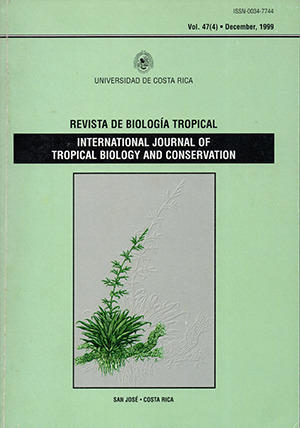Abstract
The relationshíp of weather conditions, passion fruil vines (PassifIora edulis f.jlavicarpa) flower number, density of carpenter bees (Xylocopa spp., Hymenoptera: Anthophoridae) and effective pollínizalÍon was studied in Vi\;osa, Minas Gerais, Brazil. Low levels of víable fruits (14.3%) were observed when ¡here were less flowersl row « 0.8 flowers in anthesis/linear meter). When densíties of f10wers in anthesis were between 0.8 and 1.2. there was a higher proportion of viable flowers and more visits by Xylncopa spp. (maximum: seven visitsl flower).. Above 1.2 flowers in anthesis/ linear meter there was a linear increase in ¡he proportion of viable fruits and visits by Xylocopa spp. However; numbers were lower than in days with 0.8-1.2 flowers in anthesis/ linear meter. The highest bee density (ca. 49 beesl hal hr) was between 2: 00 and 3: 00 pm (temperature, relative humidity and insolation around 26 oC, 55% and 0.6 respectively). Al higher temperatures and relative humidities, there was a decrease in Xy/ocopa spp. density, while hígher densities high al more elevated insolatíonComments

This work is licensed under a Creative Commons Attribution 4.0 International License.
Copyright (c) 1999 Revista de Biología Tropical
Downloads
Download data is not yet available.






